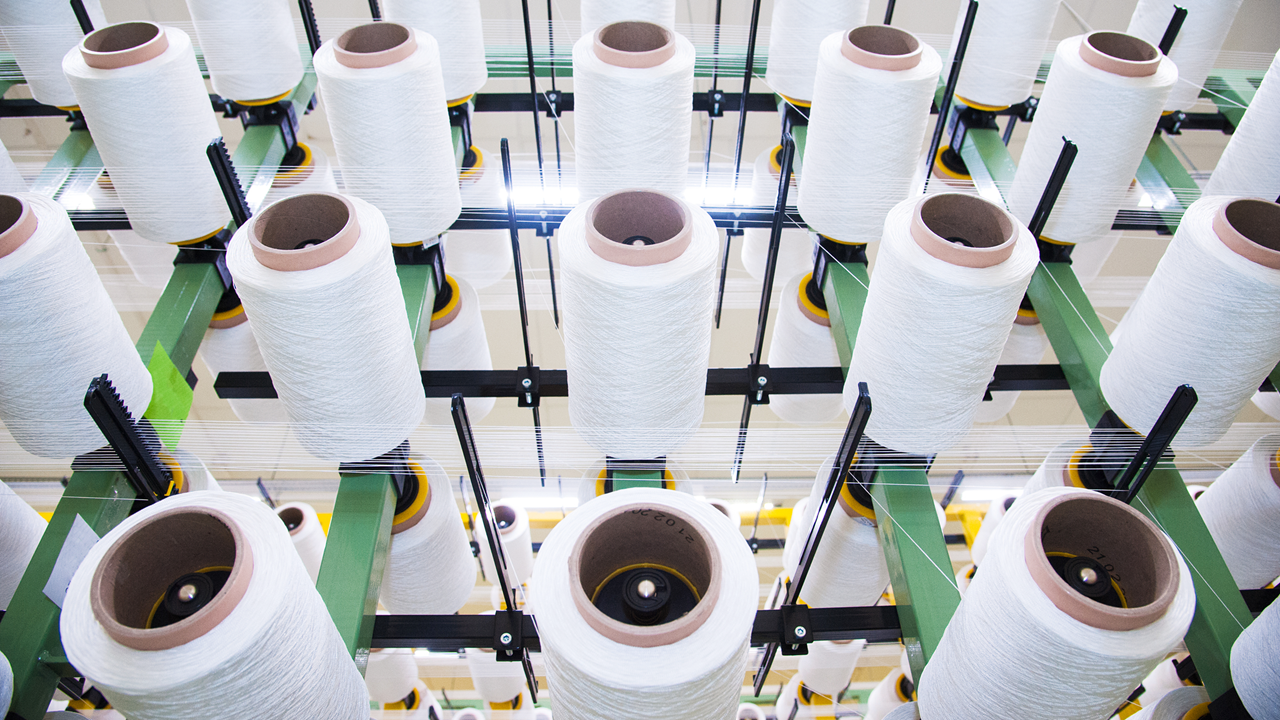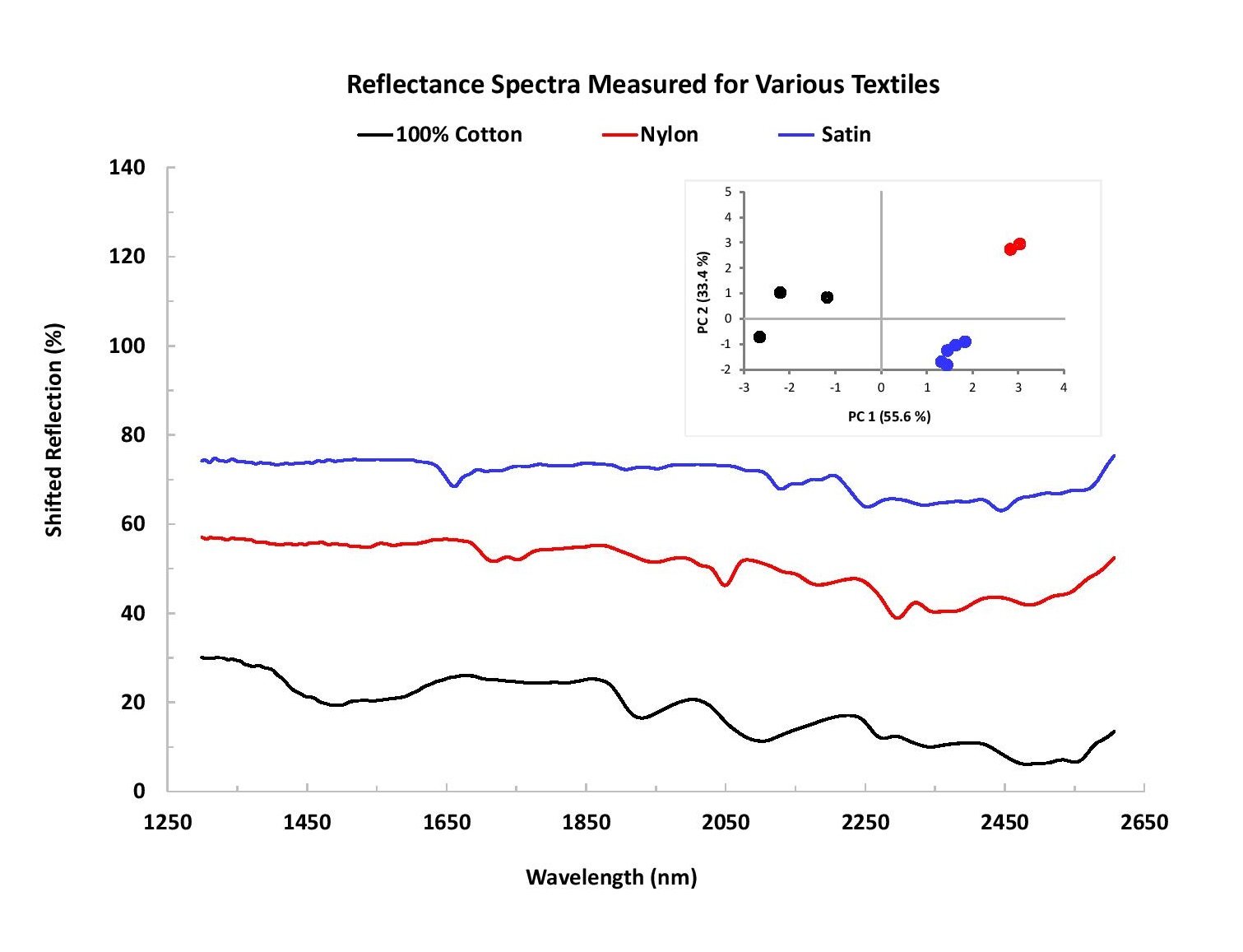Subscribe to Our Blog
Receive updates from our team as we share application notes, customer spotlights, educational tools, spectroscopy how-to’s, and more.

FT-NIR spectroscopy offers a simple tool to identify different types of textiles, with distinct spectral features observed at wavelengths >1350 nm. This approach may be useful for authentication of natural and synthetic consumer textile products.
Vibrational spectroscopy is widely used for the non-destructive characterization of materials. As light interacts with the material, molecules bend and stretch creating vibrations specific to the chemical bonds and functional groups within the material. These vibrations give rise to a unique spectral fingerprint that can be used to characterize and even identify the material analyzed.
Vibrational spectra are measured using either Raman or infrared spectroscopy techniques that differ based on the specific light interaction measured. Raman measures the inelastic scattering of monochromatic laser light while infrared spectroscopy measures the absorption of infrared wavelengths. These complementary techniques have their strengths and weaknesses, with both techniques often used together for more complete characterization of the material.
Both Raman and infrared spectroscopy techniques have been used to characterize textiles and fabrics for incoming inspection of raw materials and to assess the authenticity of products produced from these materials. In the case of colorful textiles and fabrics, infrared spectroscopy is sometimes preferred to Raman to avoid the strong Raman background spectrum that can arise from the dyes found in brightly colored textiles.
In this post, we describe how a compact, MEMS-based, single-photodetector NIR device, the NanoQuest spectral sensor, can be used to distinguish different types of textiles.
Reflectance from 100% cotton, nylon and satin textile samples was measured across the extended NIR wavelength range (1350-2500 nm) using the Ocean Insight NanoQuest spectral sensor with a high-powered tungsten halogen light source (Ocean Insight model HL-2000-HP) and 600 µm Visible-NIR reflection probe. Measurements were made with the probe oriented at 90 degrees relative to the fabric surface using a manual optical stage. All measurements were referenced to a WS-1 model PTFE (Teflon) diffuse reflection standard.
NanoQuest is based on Fourier transform infrared (FT-IR) technology. Its patented micro-electro-mechanical systems (MEMS) technology allows for a continuous-wave Michelson interferometer to be created monolithically on a MEMS chip, enabling detection of all wavelengths simultaneously across the 1350-2500 nm range.
In the NanoQuest software, optical resolution was set to 8 nm (FWHM) and a custom gain setting was generated to optimize the signal to noise ratio for the measurement setup. Each sample was measured at 5 different locations with resulting spectral data pretreated by a 2nd derivative with smoothing, and a standard normal variate (SNV) was applied. Principal component analysis (PCA) was applied to the dataset.
The NIR spectra measured with the NanoQuest can easily discriminate among the different textile types. Figure 1 shows the reflectance spectra of the three textiles measured: cotton, nylon, and satin. Differences in the spectral profile for each sample can be seen readily, and the inset PCA plot shows distinct separation between the clusters for each textile sample.

Figure 1: Comparison of the three textile samples measured with NIR reflectance. The inset PCA scatter plot shows results after pretreatment by 2nd derivative and SNV.
The experiments clearly demonstrate that the NIR spectra measured with the NanoQuest have unique features helpful to identify both natural and synthetic textiles. Application of PCA to the spectra further demonstrated the distinction among textile samples. Additional investigation may include testing unknown textile samples to correctly identify them.
In addition to authentication of textiles, polymers and other materials, NanoQuest application areas include food and agriculture (soil analysis and soybean screening), and biomedical (bodily fluids analysis).

Receive updates from our team as we share application notes, customer spotlights, educational tools, spectroscopy how-to’s, and more.